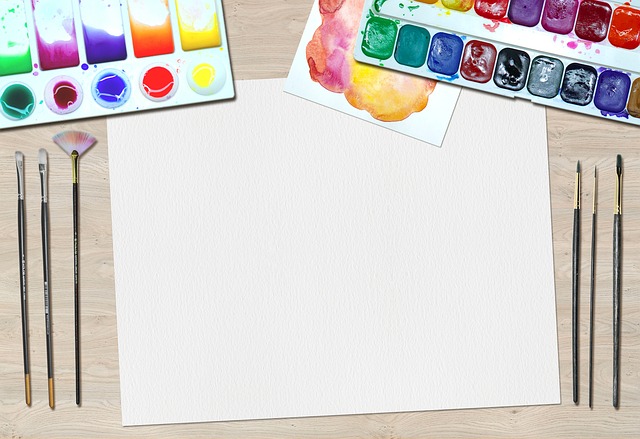# Imagining the Unimaginable: The Transformative Influence of AI on Art and Visual Expression
The intersection of artificial intelligence and art has sparked a revolution that is reshaping the landscape of visual expression. As technology continues to evolve, the capabilities of AI in generating, enhancing, and interpreting art have expanded dramatically. This article explores how AI is transforming the creative process, the implications of this transformation for artists and audiences alike, and the ethical considerations that arise from this new frontier.
## The Creative Process: Collaboration Between Human and Machine
To understand the transformative influence of AI on art, one must first examine how it alters the creative process. Traditionally, art has been an inherently human endeavor, steeped in personal experiences, emotions, and cultural contexts. However, the advent of AI tools has introduced a collaborative dynamic that enables artists to explore new creative avenues. For instance, programs like DALL-E and Midjourney allow artists to input text prompts and receive unique visual interpretations, effectively broadening the scope of artistic possibilities.
Moreover, artists are increasingly using AI as a co-creator rather than a mere tool. This shift is exemplified by the work of artists like Refik Anadol, who employs machine learning algorithms to analyze vast datasets, generating immersive installations that challenge the boundaries of traditional art forms. By harnessing AI’s computational power, artists can create complex visual narratives that would be nearly impossible to achieve through manual techniques alone. This collaboration encourages a redefinition of authorship and creativity, as the lines between human and machine-generated art become increasingly blurred.
In addition, AI is facilitating the democratization of art creation. Individuals without formal artistic training can now experiment with AI-driven tools to produce compelling visual works. This accessibility empowers a diverse range of voices to contribute to the art world, fostering a rich tapestry of perspectives and ideas. As a result, AI is not only transforming how art is created but also who gets to create it, ultimately enriching the cultural landscape.
## The Impact on Artistic Expression and Aesthetics
Artistic expression is undergoing a significant transformation due to the integration of AI technologies. With the ability to analyze and synthesize vast amounts of visual data, AI can generate styles and techniques that push the boundaries of traditional aesthetics. Artists are increasingly experimenting with these new forms, leading to the emergence of unique styles that blend human creativity with machine learning capabilities.
One notable trend is the rise of generative art, where algorithms create works that evolve over time or respond to real-time data inputs. This dynamic form of art challenges conventional notions of static visual expression, inviting viewers to engage with art in novel ways. For instance, generative art installations can adapt to their surroundings, creating a fluid dialogue between the artwork and its environment. This interactivity not only captivates audiences but also encourages them to consider the relationship between technology and creativity.
Furthermore, AI is influencing the aesthetics of art by enabling the exploration of new mediums. Artists are increasingly incorporating virtual reality (VR) and augmented reality (AR) into their work, creating immersive experiences that transcend traditional viewing methods. By utilizing AI to enhance these technologies, creators can craft environments that respond to audience interactions, thereby deepening the emotional impact of their art. This evolution in artistic expression is not merely a trend; it represents a fundamental shift in how art is conceived, experienced, and appreciated.
## Ethical Considerations: Navigating the New Frontier
As AI continues to reshape the art world, ethical considerations surrounding its use are becoming increasingly prominent. The question of authorship arises: who owns the rights to an artwork generated by an AI? While traditional art is often attributed to a single creator, AI-generated pieces complicate this notion, as they may draw on existing works and styles without clear attribution. This ambiguity raises concerns about intellectual property rights and the potential for artistic plagiarism.
Another ethical dilemma involves the potential for AI to perpetuate biases present in the data it is trained on. If an AI system is fed images that reflect certain cultural or societal biases, it may inadvertently reproduce these biases in its generated art. This possibility highlights the need for artists and technologists to remain vigilant about the datasets they use and the implications of their creations. It also underscores the importance of fostering diversity and inclusivity within the tech and art communities to ensure that AI serves as a tool for empowerment rather than exclusion.
Moreover, the commodification of AI-generated art presents challenges for the traditional art market. As AI tools become more accessible, the proliferation of digital artworks raises questions about value and authenticity. Collectors and galleries must navigate this evolving landscape, determining how to evaluate and promote AI-generated works alongside traditional pieces. This shift may lead to a reevaluation of what constitutes art and value in the contemporary art world.
## Conclusion: Embracing the Future of Art
The transformative influence of AI on art and visual expression is undeniable. By reshaping the creative process, expanding artistic expression, and prompting ethical discussions, AI is ushering in a new era for artists and audiences alike. As we continue to explore the potential of these technologies, it is essential to embrace the opportunities they present while remaining mindful of the challenges they pose.
Ultimately, the integration of AI into the art world invites us to reconsider our understanding of creativity and the role of technology in shaping human expression. By fostering collaboration between artists and machines, we can unlock new dimensions of creativity that enrich the cultural landscape and inspire future generations. The journey into this uncharted territory promises to be as exhilarating as it is unpredictable, challenging us to imagine the unimaginable in the realm of art.

